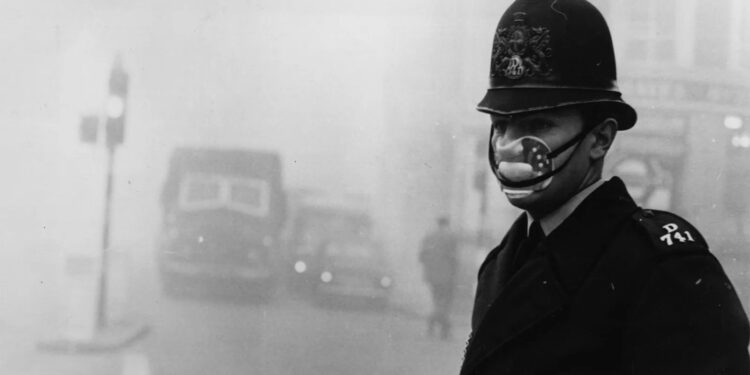In December 1952, London was plunged into darkness, not by the absence of sunlight, but by a lethal blanket of smog that descended upon the city. The Great Smog of London, as it came to be known, remains one of the deadliest environmental disasters in history, claiming thousands of lives and leaving a lasting impact on air quality regulations.
The smog that enveloped London was a noxious combination of fog and air pollution, primarily caused by the widespread use of coal for heating and industrial processes. The city’s chimneys pumped vast amounts of sulfur dioxide and particulate matter into the air, creating a dense and toxic fog that severely restricted visibility and infiltrated the respiratory systems of its inhabitants.
The crisis reached its peak between December 5th and 9th, when the smog became so thick that it brought daily life to a standstill. Transportation systems ground to a halt, and pedestrians struggled to navigate through the murky air. Hospitals were inundated with patients suffering from respiratory distress, and the death toll began to climb at an alarming rate.
The health consequences of the Great Smog were devastating. Official estimates suggest that the event led to the premature deaths of at least 4,000 people, with some sources suggesting the number could be much higher. The elderly and those with pre-existing respiratory conditions were particularly vulnerable, as the smog exacerbated their health issues.
In the aftermath of this environmental catastrophe, the British government was forced to confront the reality of unchecked industrial pollution. The Clean Air Act of 1956 was a direct response to the Great Smog and aimed to regulate the burning of coal in urban areas. The Act led to a significant reduction in air pollution, improved air quality standards, and set the stage for further environmental legislation globally.
The London smog of 1952 serves as a stark reminder of the consequences of environmental neglect. It was a turning point that prompted governments worldwide to recognize the importance of regulating air quality and addressing industrial pollution. Today, the lessons learned from the Great Smog continue to shape environmental policies, as countries strive to balance industrial development with the preservation of public health and the environment.
In conclusion, the lethal smog that engulfed London in 1952 was a dark chapter in environmental history, marking a tragic period when unchecked industrial pollution had dire consequences for public health. The lessons learned from this disaster spurred legislative action and shaped the trajectory of environmental policy, leaving a lasting legacy that emphasizes the importance of protecting the air we breathe.
newshub

